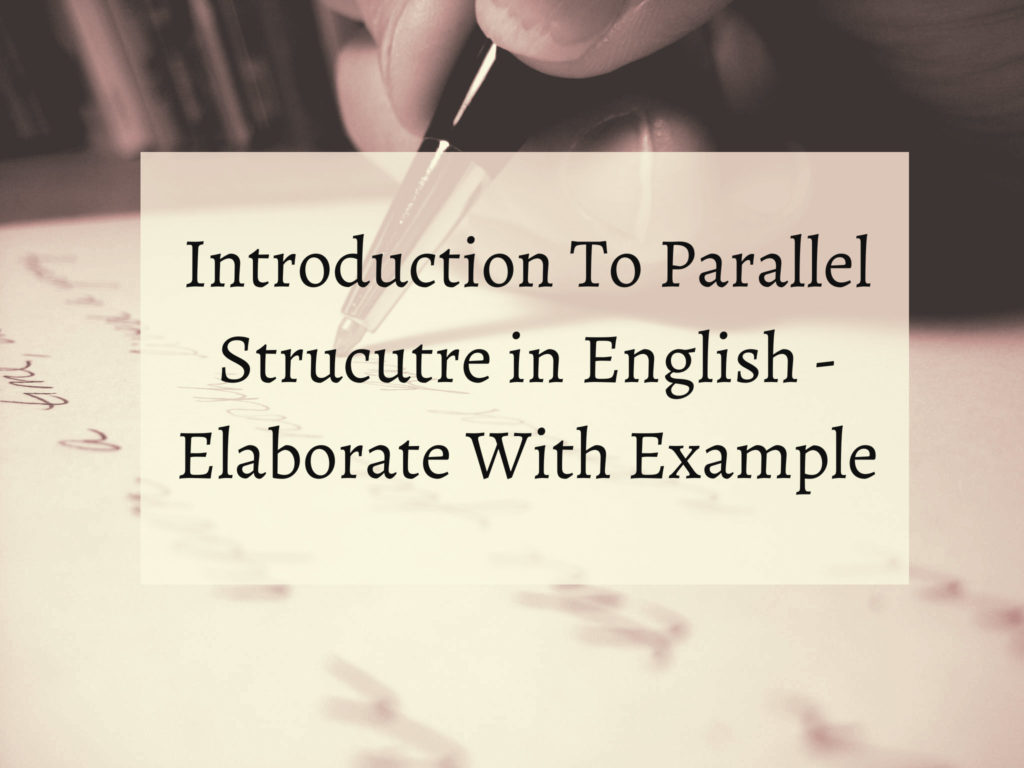In English grammar, the sentence is an organized group of words which come together to express the thought. Similarly, the parallel sentence structure refers to the fact that the same word pattern within a sentence by repeating a chosen grammatical form. Parallel sentence structure will emphasis on the same level with multiple ideas or information.

The basic thing that you must know about the parallel structure is that a sentence may have multiple numbers of information or ideas. In the correct grammatical form, the first information is followed by the second to express the remaining ideas. These multiple ideas or information are usually connected by the coordinating conjunctions. If you are considering parallel sentence structure then it can be constructed by different phrases or clauses in different sentences.
A parallel sentence structure is quite an advanced grammar concept. So, before you dive into the new subject, you must have knowledge of the exact definition of parallel structure. The example sentences given below will help you to understand the parallel sentence structure in a better way. In the pair of sentences, one sentence is parallel and another one is not parallel.
| Note: But if it’s indicated in the sentence that different clauses happened at different times or will happen in the future then, this rule of parallel structure is not needed to be followed. |
3 Rules of Using Parallel Structure
Now, you can say that, all the rules of the parallel structure.
1. Require Multiple Verbs
This is one of the most important rules. The parallel sentence structure is the one that would require more than two verbs and also have similar grammatical forms. The parallel structure will always be applied to the verbs that are used in a group of nouns that are used together. If you observe carefully, then you would notice that verbs have different tenses, participles, and variations of plural & singular.
2. Always Use Parallel Structure Within A Single Clause
By this rule, we mean that multiple verbs or nouns should be parallel in the same clause. We know that a clause must have a subject and a predicate.
- A complete sentence clause with a parallel structure.
The car won’t drive or even start. - A phrase clause with parallel structure (the clause portion of the sentence is in bold)
He couldn’t get to work with his car not driving or starting.
3. Parallel Sentence Structure With Verbs & Nouns Joined By Conjunctions
When you are using conjunctions with parallel structures, you would have to join multiple nouns and verbs. Whenever you see conjunction in the sentence, ensure that you need to use a parallel structure.
- He’s working hard while earning lots of money.
In this sentence, you can see that the word or conjunction ”while” is used to connect the parallel verb form – working and eating.
- Active volcanoes may spew smoke, ash, and sometimes lava.
In the above sentence, you can see that the conjunction “and” is used to connect three different singular noun forms – ash, lava, smoke.
5 Examples of Parallel Sentences in English
Example 1:
Not Parallel: Mohan likes studying, swimming (noun), hiking (noun), and to ride a motorcycle (phrase).
Parallel: Mohan likes studying, swimming(noun), hiking(noun), and riding a motorcycle(noun).
Example 2:
Not Parallel: All the students were asked to do their assignments quickly (adverb), accurately (adverb), and in a detailed manner (phrase).
Parallel: All the students were asked to do their assignments quickly (adverb), accurately (adverb), and thoroughly (adverb).
Example 3:
Not Parallel: Mr. Bean is a lawyer (noun), a politician (noun) and he teaches (clause).
Parallel: Mr. Bean is a lawyer (noun), a doctor (noun) and a teacher (noun).
Example 4:
Not Parallel: You could see all the soldiers approaching the main base camp which was also the technology center.
Parallel: You could see the soldiers approaching the main base camp slowly (adverb) and silently (adverb)
Example 5:
Not Parallel: Emily was an employee (noun), who worked hard (past), and is getting a good salary (present).
Parallel: Emily joined the office (past), worked hard (past), and got a pay raise (past).
Keep learning new English language concepts at EnglishBix!

